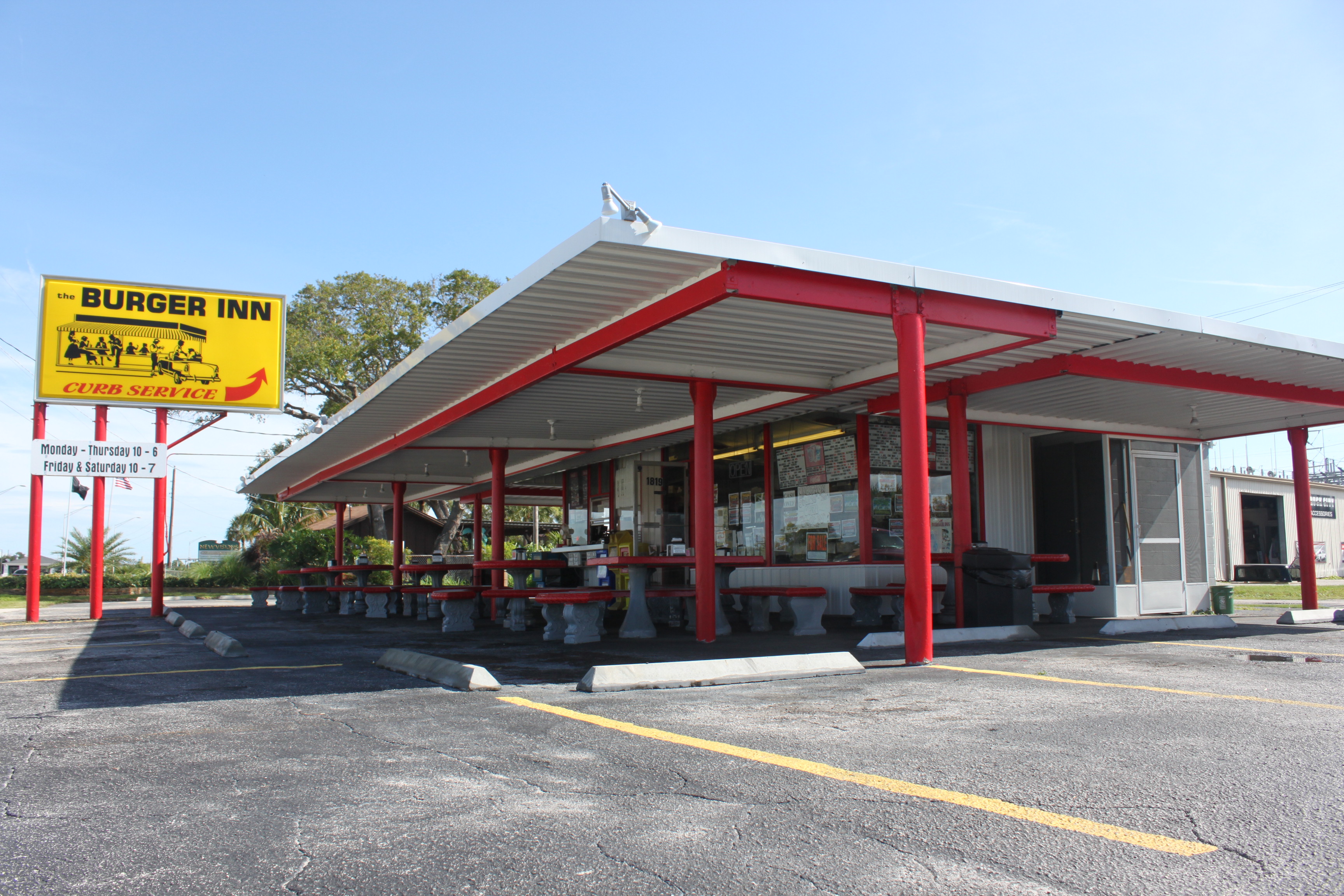BY LESA.LORUSSO ON OCTOBER 1, 2012

Images and Text by Lesa N. Lorusso
American Architectural Styles: Midcentury Modern at The Burger Inn, Melbourne Florida
Jubilant over the end of the Second World War, American culture exploded with new ideological concepts. The prospect of a bright future excited Americans who began to place an over-arching cultural emphasis on good times. This newly minted euphoric cultural focus gave birth to experience-driven entertainment. Mid century crooners like Nat King Cole encouraged Americans to motor west on Route 66, and the concept of marketing vacation travel to the burgeoning middle class began with gusto. Americans proudly purchased chrome covered status symbols and whole-heartedly embraced the concept of experience-driven entertainment. Thanks to the booming automobile industry, Americans experienced a newfound mobility in a tantalizing assortment of colors. The shrewd media, eager to make a profit, encouraged consumers to dispel with expendable income. The American public happily obliged. This exuberant new ideology paved the road for architectural innovations including motels, drive-in movie theaters and roller skating burger joints. Americans hit the road in search of fun.
Located at 1819 N. Harbor City Blvd in Melbourne, FL, the Burger Inn resides as a visually energetic remnant of the fun-focused midcentury phenomenon. Lovingly restored by owner and operator Al Urezzio, the circa 1951 restaurant maintains original fixtures and charm and boasts a coveted four and a half star rating on urbanspoon.com. Brightly swathed in the undeniably delicious hues of mustard and ketchup, the Burger Inn eagerly awaits hungry diners alongside a major thoroughfare also known as US 1 in Melbourne, FL. The quirky architectural features of this lively fast food establishment playfully beckon customers. The midcentury structure intentionally mimics the design elements featured in the automobiles that it accommodates by showcasing materials used in the auto industry. Architectural details are ornamented with materials including metal, high gloss paint and black vinyl. Exaggerated vertical and horizontal lines in the structural support for the exterior signage and porch roof contribute to the energetic visual rhythm and movement of the architectural design. The clean and utilitarian exterior décor remains unobtrusively friendly, smiling at customers like a waiter in a white apron and crisp paper cap.
Concerns about cholesterol and saturated fat take a back seat at this family friendly destination. Patrons enjoying lively curb service also have the option to dine under the cover of a flat entablature while seated on modest benches made of poured concrete. Clientele wishing to dine alone or in a hurry find an ideal spot within the small, glass-encased interior dining section. This narrow interior location boasts original pedestal stools, vinyl seat covers and black and white checkerboard tiles. The row of small metal stools alongside the checkerboard countertop provides a front row view of the burger flipping. This is also an excellent platform to take advantage of the close proximity to the owner, always eager to impart visitors with information regarding the history of the structure. Behind the counter rests an artist’s colorful rendering of the restaurant sitting atop an original stainless steel built-in cooler. Along the back wall stands shelving stocked with paper towels, utensils and burger buns. The stainless steel interior fixtures and appliances glint in the bright Florida sun as if to wink at customers indulging in the deliciously greasy fare and thank them for stopping by.